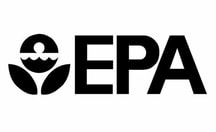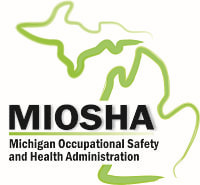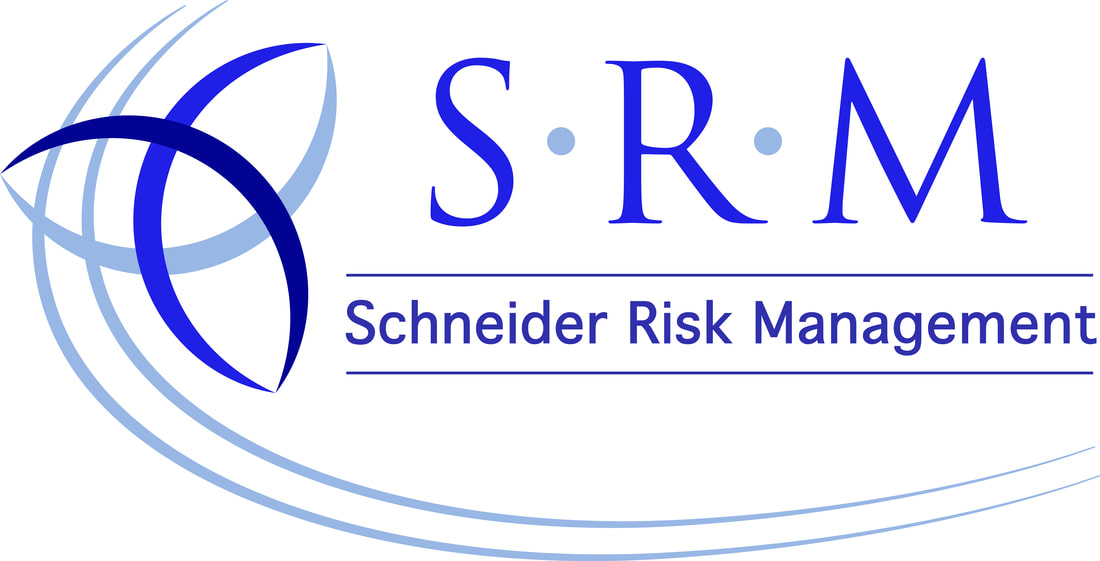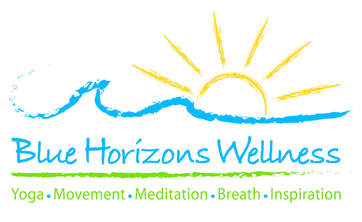 Chemical Accident Prevention is high on everyone’s priority list. The EPA even has a rule for it. The Risk Management Plan (RMP) Rule (40 CFR Part 68) governs accident prevention under Section 112(r) of the Clean Air Act Amendments. The “RMP Rule” established regulations that facilitate accident prevention at facilities that use certain highly hazardous chemicals listed in the regulation. For example, many facilities that use anhydrous ammonia are required to prepare and implement an RMP at their location, and must submit the RMP to the EPA every 5 years. Whoa, you say. What’s in an RMP? An RMP is a set of documents and procedures that govern the following actions at a facility when that facility has the highly hazardous chemicals in a process in quantities above a Threshold Quantity. For ammonia refrigeration the threshold is 10,000 pounds.
Why would a facility want to prepare an RMP? First of all, because these plans provide your local police, fire and emergency response personnel with information needed so that they can respond to an incident at your facility in the most effective way possible. And, Secondly, because these plans must be submitted to EPA. They must also be resubmitted every five years. FUN FACT Did you know that the Environmental Protection Agency implements the Risk Management Plan (RMP) Rule in Michigan – not the Michigan Department of Environmental Quality?  The August 9, 2018 Federal Register provided OSHA’s latest amendments of the Beryllium rule (29 CFR 1910.1024) and delayed certain compliance deadlines. We think its helpful for the compliance deadlines to be outlined in chronological order. So we made a list for you. Below are the compliance dates (bolded) for the OSHA rule. If the MIOSHA dates are the same or different, it is noted. Listed below the compliance dates are the various paragraphs of 1910.1024 that are affected by the bolded compliance dates: March 12, 2018 – same for MIOSHA This is the compliance date for obligations contained in paragraphs (c), (d), (g), (k), and (l) of this standard.
December 12, 2018 – MIOSHA Part 340 is March 12, 2018. The amended rule sets this date as the compliance date for “all other obligations” of this standard such as:
March 11, 2019 – same for MIOSHA For paragraph (i) Hygiene Areas and Practices, the following requirements have been postponed until this new compliance date:
March 10, 2020 – same for MIOSHA For Engineering Controls required by paragraph (f) this is the new compliance date. However, It is believed that the intent here is for companies to comply with the non-engineering control portions of this section such as:
We’ll keep you updated on more OSHA and MIOSHA updates of this and other standards in future issues.  I can still remember it today. My first job as a safety manager for a manufacturer that had operations in four states, Canada and Mexico. Very exciting, and what a great opportunity for me to spread my wings …… that is until I started the job and discovered that my predecessor had been a safety Nazi and that the safety culture was old-school and just plain sour. I mean some people did not even want to be seen talking to me. I was seen as just another person who was going to tell them they could not make changes. On top of that, upper and middle management were not too keen on spending money implementing safety. Ya know it was just one of those “Soft” programs that take away from our bottom line, right? Argh!! I was questioning my career choice about that time. But I also saw an opportunity to grow and mature in the field and knew that I wasn’t the only person experiencing these problems. After all these years, I now see that my choice was a good one. However, I still run across companies with these same challenges. How do you get people (hourly and management) to “want” to talk about and implement Safety if they have never been educated as to the financial and production benefits? What do you do when they have been made to see Safety as something they have to do, instead of something that can improve the bottom line and make the factory floor a place where people enjoy working. In this newsletter series I will share with you some challenges I have encountered and some proven techniques I have used and have seen as effective over the 30 plus years I have been in the Safety business. Communication In those famous words spoken in the movie Cool Hand Luke “What we’ve got here is a failure to communicate,” one sees the challenge of an EHS professional. Ok, that’s a bit dramatic, but some days can be like that, right? Everybody is rushing around trying to get product out the door and doing everything in their power to get out of work on time to attend their kid’s soccer game or music recital or get to dinner or the bar. They don’t have time to listen to what YOU, the Safety person, have to say. Then, without warning, someone stops you and asks a question. And you think, this is your big chance to talk to someone about safety or environmental topics. To sell safety and even educate someone on EHS topics. Stop, breath, and think before you talk. Who is your audience? What is really important to this person? How much do they know about the topic in question? What priorities or hot button issues does their department have? What would you like to teach them about the topic or requirements? Selling Safety – One of the first things I tell new safety staff is that they need to always be ready to sell (and educate) people about safety. The worse thing we can do is be unprepared to answer questions. And we need to take our time in answering the questions as they come. After all, we are often in a hurry to get to a meeting, too. So we may not take the time necessary to really answer the person’s questions and make them a safety convert. Compound Interest – Think of safety converts this way. If you can convince one person a week that safety is worth their time and effort, in a year there will be 52 converts. Because people talk to each other, each of the converts will eventually convince a person or two or more, that safety is something worth their time, and before you know it half of the factory floor is part of your safety army. And, if your strategy includes influencing the influencers, then you can really get good results. The influencers are those people on the shop floor who are looked up to for one reason or another. They are leaders, outspoken, friendly to most people and may be quite popular. They can be line workers, line assistants, supervisors and others up the food chain. If they become converts, you’ve got it made. You’ve just multiplied your safety sales force. … a legal pyramid scheme! Avoid Regulatory Jargon - Try to keep the jargon and regulatory chatter at bay. Otherwise you might notice their eyes start to glaze over … you know, you’ve seen it… they’re still smiling but the words are not registering anymore. It doesn’t matter how many degrees or certifications you have, if someone doesn’t understand what you’re saying, the message will not get through. So, speak to people in their own language, free of our EHS jargon. Dosage – As EHS professionals we are concerned with risks associated with exposure, and exposure is measured in dosage. When talking to non-EHS professionals, always consider the size and complexity (doses) of information you provide at any one time. Use language that they understand, not regulatory jargon or text book talk. For example, dole out information in sound bites that people can digest and easily repeat to others in their department. If you are having problems with people using too many extension cords say something like this: About 1/4 of all industrial structure fires are caused by electrical distribution and lighting equipment. While this NFPA statistic does not call out extension cords specifically, a connection can be made and a seed of concern can be sewn (or planted) in a simple sound bite. Engage People – For years OSHA has said that involving workers in EHS activities and decision-making causes them to care more about and implement changes. We see that in our Lean Manufacturing and 5S scenarios too. EHS changes created through employee involvement last longer than if we just tell people to do it. The reason for this is that they now have ownership of the change. So, when an employee complains and asks why they have to do something a certain way, start with asking them to show you the issue at hand. This gets people engaged on the topic and will help you understand the scenario and where the issue is located. Ask them their opinion and about possible solutions to the problem, whether the answer is obvious or not. People have lots of opinions and are happy to share them with you. This engagement helps you build a relationship and provides an opportunity to discuss with them the physical and regulatory aspects of the issue and people can start to see and appreciate more sides to the issue. Empathy – Safety professionals have to practice looking at every disagreement situation from the other person’s point of view. If you can see their point of view and why they feel the way they do, then you will have an insight into how to effectively communicate with them, and what information may be useful during the communication. There is usually a little tenuous history associated with workplace situations, some that have existed for years. Sometimes you can work around these tenuous issues and sometimes you can’t, but talking about them almost always helps. Effective listening is one way to show empathy. Effective Listening – Speaking of effective listening, everybody wants to be heard. Employees in a big factory tend to get lost in the hustle and bustle of getting those orders out. Depending on the quality of their supervisor they may withdraw and lay low just to get through the shift. Effective listening means spending the time, eye contact, asking follow-up questions, paraphrasing what you heard and parroting. All these communication techniques help tell the person that you are listening and you care about their opinion. Patience – Many people don’t like change. As a result, sometimes you need to give people some extra time to let the change sink in and get comfortable with the idea. It’s a time for you to put your communication skills to work. If it’s a change in PPE requirements, sometimes it takes a little more effort like stopping in a day or two after the change to see how the PPE is working. I participated in a situation where we upgraded PPE for a cleaning line and added face shields and nitrile aprons to protect worker’s skin, eyes and clothing from caustic cleaner. There was one particular worker who hated the change and he was outspoken and not easy to talk to on a good day. So, being the caring safety professional that I was, instead of hiding in my cozy office, I made a point of heading out there in the middle of the next shift to see how he was doing. Well, I got an earful as soon as I arrived at the workstation. Too hot, can’t see, the cleaner was still getting on the person’s face. So, I left and went back to my cozy office ….. to get a note pad to do another Job Safety Analysis. But this time the JSA was not so much on the work station and the PPE, but rather on how the person was performing the job with the equipment and PPE assigned. I was patient and let the worker explain his side, I showed empathy and we objectively looked at it from all sides - together. What we found was that the person was being reckless with the cleaning equipment, causing lots of overspray, and he kept touching his face with his glove that had caustic cleaner residue on it. Long story short, we talked, I listened, he listened. With the supervisor’s participation we made some changes to the work station that the worker suggested, and he made some adjustments on how he did his job, and he promised to try harder to keep his hands away from his face. And, after a few more days, he was not so grumpy and not having any problems. In fact, he later became an assistant line leader and he was tasked with helping other workers at that same workstation avoid some of the problems he encountered. He became part of the solution. He was selling safety! And, you know what else? He stopped being the grumpy complainer and started coming up with other improvements to the line that actually made it run better! But, remember, what led to that was an opportunity for him to be heard and become part of the solution and take ownership of the solution. Hey, maybe employee participation works after all! Next time … How Important is Your Attitude Toward Other People? Author: Bill Schneider, CHMM Begins at 9:30 am - 11:00 am |
|




 RSS Feed
RSS Feed
